Patents
Aroma Discs
Donald Spector received a patent for these in 1985. They looked like small music discs. But instead of producing sound, they released an aromatic vapor when put in the 'player'.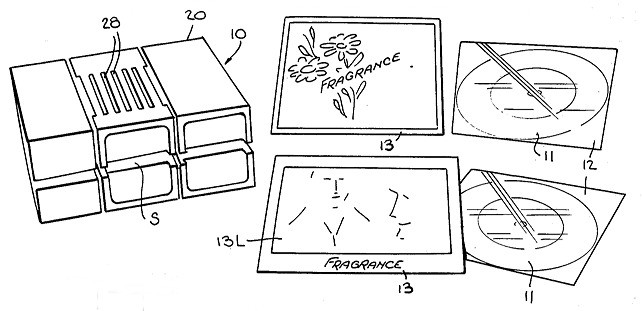
I don't see what advantage an aroma disc would have over an incense candle (except, perhaps, for the lack of an open flame). Which, I assume, is why these are no longer around and incense candles are all over the place.
But Spector was successful enough to have his product featured on The Tonight Show with Johnny Carson:
Posted By: Alex - Sun Sep 06, 2020 -
Comments (3)
Category: Inventions, Patents, 1980s, Perfume and Cologne and Other Scents
Aroma of Cocaine
In 1981, Warren Woodford of Atlanta, Georgia was granted a patent (No. 4,260,517) for a method of producing the "aroma of cocaine". From the patent:Olfactory conditioning by brain trigger stimulus has recently found application in law enforcement agencies. In some instances, narcotics officers are permitted to light a marijuana cigarette during their training in order to allow them to later react to the characteristic aroma of marijuana smoke. Similarly, officers may be exposed to the aroma of cocaine so as to familiarize them with its distinctive aromatic smell...
Due to the legally controlled nature of such substances as cocaine and marijuana, it is usually not possible to freely disseminate samples of such substances to everyone who might wish to become acquainted with the aromas of these substances. Drug familiarization programs have as a result been limited by the availability of the drugs themselves.
It is therefore desirable to find alternative sources for the aroma of certain controlled substances.
I'm surprised this was never turned into a perfume.
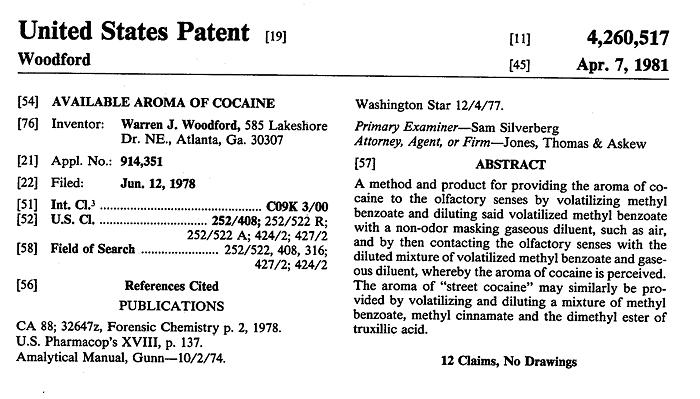
Posted By: Alex - Sun Aug 30, 2020 -
Comments (2)
Category: Drugs, Patents, 1980s, Perfume and Cologne and Other Scents
The Holie Terra
Seeking a way to use technology to win the tunnel warfare in Vietnam, Nelson Frost of Byram, Connecticut invented the "Holie Terra." Although in the write-up for the patent he received (No. 3,395,641), he referred to it more formally as a "remotely controlled tunnel exploration and destroying means."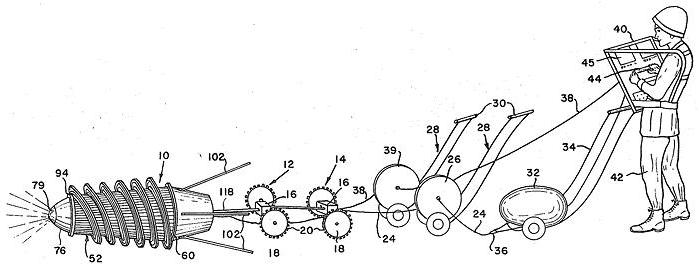
From his patent:
More particularly, it is an object of the invention to provide a tunnel exploring device which may be maneuvered from a remote position deep into the tunnel network and there be detonated so that there is a much higher kill probability of the enemy forces with greater safety to the attackers than has been possible by any means employed heretofore.

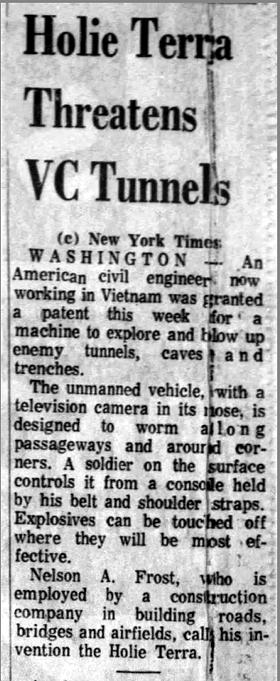
Montgomery Advertiser - Aug 15, 1968
Posted By: Alex - Sun Aug 23, 2020 -
Comments (2)
Category: War, Weapons, Patents, 1960s
Horizontal Theater
Back in 1945, Thomas Curtis Gray of Washington, DC was granted a patent for a theater in which the patrons would view the movie while lying-down. To facilitate this, the movie was projected onto a screen anchored to the ceiling.Gray argued that his horizontal theater had several advantages over a traditional theater. First, it would be more comfortable to watch a movie while reclining. Second, a patron's view would never be obstructed by someone in front of them. And finally, the screen could be located at a closer-to-equal distance from all viewers.
I've never heard of a horizontal theater being built. But arguably his patent foreshadowed the rise of the modern-day luxury cinemas where you can relax in seats that recline almost all the way back.

Posted By: Alex - Sun Aug 09, 2020 -
Comments (0)
Category: Architecture, Inventions, Patents, Movies, 1940s
Corn Vest
Rick Atkinson, Jr. of Canton, Georgia recently received a patent for a vest designed to hold "bulk product," such as corn. The corn goes in pockets at the top of the vest, and can then be dispensed from pockets at the bottom.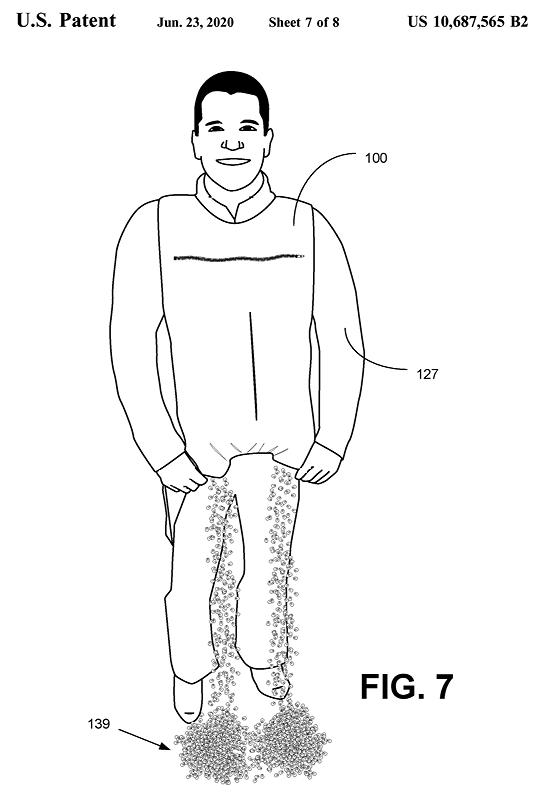
Atkinson explains that he designed the vest for hunters who "may carry corn, soybeans, grains, and/or other bulk products to attract deer, hogs, turkey, bear, and/or other wild game." Instead of carrying large bags of corn around, they can simply wear the corn and dispense it as they walk around.
I imagine this could also be useful for feeding pigeons in the park.
Posted By: Alex - Thu Jul 23, 2020 -
Comments (5)
Category: Fashion, Food, Inventions, Patents
Square Pants
Patented in 1970 by Harold Koenig of Miami, Florida.
Posted By: Alex - Sun Jul 05, 2020 -
Comments (5)
Category: Fashion, Patents, 1970s
Apparatus for temporarily immobilizing earthworms
Worms wiggle. This can make it hard for fishermen to impale them on a hook. But in 1989, Loren Lukehart of Boise, Idaho offered a solution. He received a patent (No. 4,800,666) for a method of "dewiggling" earthworms.His invention was essentially a rectangular box full of sand. From his patent:
Once the sand coated earthworm is immersed in water, the sand rinses free and the earthworm resume its normal wiggly character.
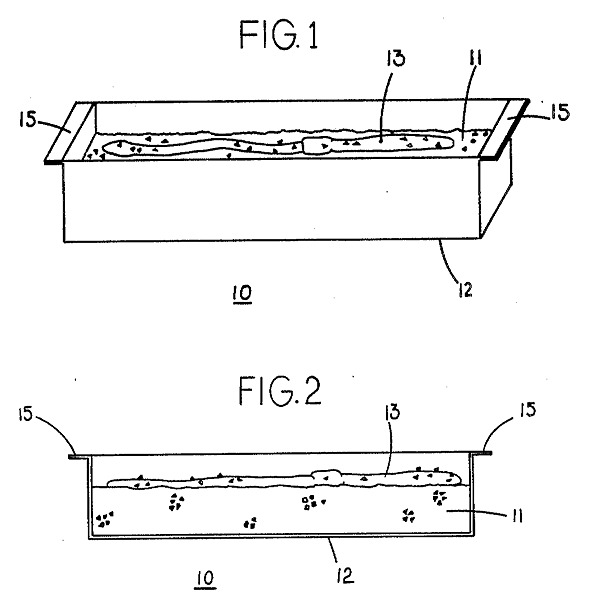
Posted By: Alex - Sun Jun 28, 2020 -
Comments (0)
Category: Inventions, Patents, Sports, 1980s
Animal Trap
Jason Alexander Williams didn't mess around when it came to killing rodents. His 'animal trap' (patented in 1882) shot them dead:The object of my invention is to provide a means by which animals which burrow in the ground can be destroyed, and which trap will give an alarm each time that it goes off, so that it can be reset.
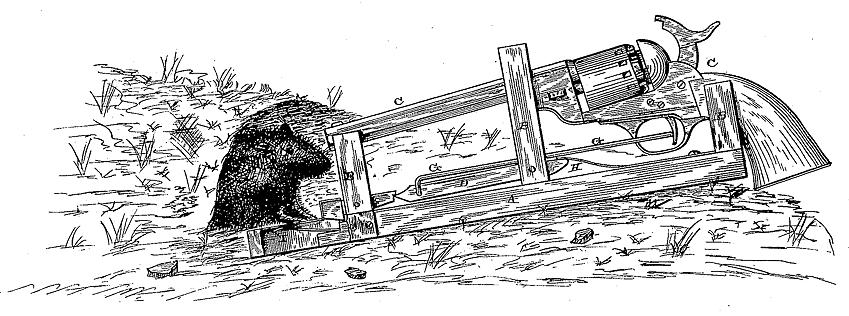
And his invention didn't just kill rodents. Williams noted:
Posted By: Alex - Sun Jun 21, 2020 -
Comments (1)
Category: Animals, Inventions, Patents, Nineteenth Century
Man-Catching Tank
Stanley Valinski's "man-catching tank," for which he received a patent in 1921 (#1,392,095), looked a bit like a dalek prototype.He imagined it would be used in banks for catching and holding burglars. It consisted of an armored watchbox concealing an armed watchman who could peer out through peep holes. The entire device moved on electric-driven wheels, which the watchman could steer. Upon spotting a burglar, he would maneuver the tank into position and then grasp the criminal with six enormous steel claws attached to the side of the machine.
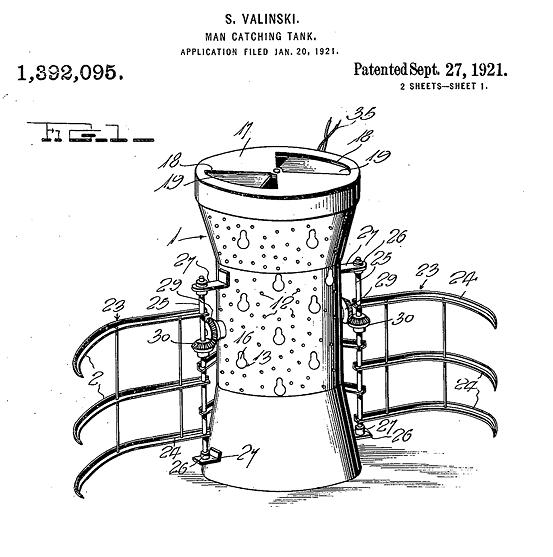
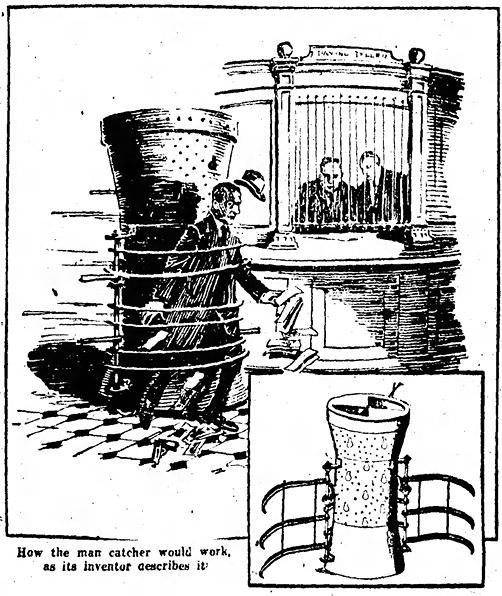
Wichita Daily Times - Dec 18, 1921
Posted By: Alex - Sun Jun 14, 2020 -
Comments (0)
Category: Crime, Inventions, Patents, 1920s
Hand Sanitizer Holster
Paula Russo was recently granted patent #10653232 for a "hand sanitizer holster," which seems like a timely invention for the age of covid, although she must have begun the patent process long before covid-19 was known.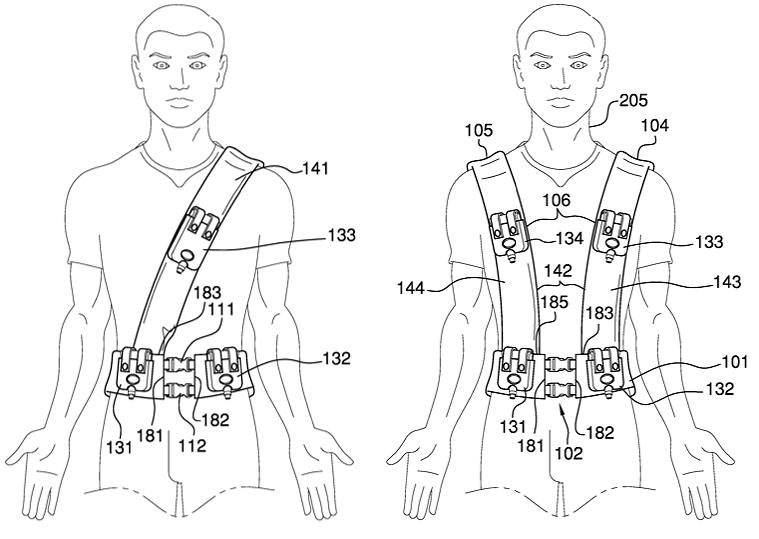
Posted By: Alex - Sun Jun 07, 2020 -
Comments (6)
Category: Hygiene, Baths, Showers and Other Cleansing Methods, Inventions, Patents

| Who We Are |
|---|
| Alex Boese Alex is the creator and curator of the Museum of Hoaxes. He's also the author of various weird, non-fiction, science-themed books such as Elephants on Acid and Psychedelic Apes. Paul Di Filippo Paul has been paid to put weird ideas into fictional form for over thirty years, in his career as a noted science fiction writer. He has recently begun blogging on many curious topics with three fellow writers at The Inferior 4+1. Contact Us |




